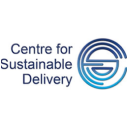Limit acute treatment to less than 10 days per month (on average 2 days per week) to prevent development of medication overuse headache.

Limit acute treatment to less than 10 days per month (on average 2 days per week) to prevent development of medication overuse headache.
Please consider a prescription of a triptan, as per BNF. As a first option we recommend sumatriptan 50mg-100mg orally, as per SIGN 155.
Types of triptan
There are seven different triptans – almotriptan, eletriptan, frovatriptan, naratriptan, rizatriptan, sumatriptan, zolmitriptan. Response to different triptans is variable, and people who fail to respond to one triptan may respond to another. Therefore, if the patient does not respond to one triptan after use in three separate attacks, consider an alternative triptan. It can be worth trying triptans in sequence to find the most suitable of any individual patient. Note that naratriptan and frovatriptan have a slower onset but a longer half-life (approximately 5-6h for naratriptan; 25h for frovatriptan) and are therefore useful if patients describe recurrence of headache with a shorter acting triptan. All preparations come in tablet form. Sumatriptan also comes as a subcutaneous injection, sumatriptan and zolmitriptan come in nasal spray preparations (useful if prominent nausea) and rizatriptan and zolmitriptan also come in an orodispersible (melt) preparation.
Adverse effects
Patients should be warned that triptan sensations and/or sedation may occur. Symptoms may include tightness in the jaw, throat, or chest, or pins and needles in the face.
Cautions and contraindications
Triptans are contraindicated in coronary heart disease, peripheral vascular disease, or those with a history of stroke, and are cautioned in those with Raynaud’s phenomenon. They should not be used in patients with a history or moderate or severe hypertension. Do not prescribe if blood pressure measurements are consistently above 140/90mmHg. While triptans are not licensed for adults greater than 65 years, there is no reason they can’t be used. Vascular risk factors are more common and should be actively looked for in this age group.
How to Take Triptans
Triptans should be taken at the onset of the headache pain, and are more effective when taken early in an attack. Treatment frequency should be limited to two days per week (up to 2 doses can still be taken in any one day if needed) – more frequent use can result in medication overuse headache. If the first dose is ineffective, a second dose should not be taken for the same attack. If there is response to the first dose, but symptoms recur, a second dose may be taken provided there is a minimum of 2 hours between doses of almotriptan, eletriptan, frovatriptan, rizatriptan, sumatriptan, zolmitriptan, and 4 hours between doses for naratriptan.
Drug Interactions (not exhaustive)
Triptans should not be combined with monoamine oxidase inhibitors.
Triptans are not contra-indicated with Selective Serotonin Reuptake Inhibitors (SSRIs).
In patients taking propranolol, limit rizatriptan to the 5mg dose, and ensure a minimum separation of 2h between taking propranolol and rizatriptan. No more than 2 doses of rizatriptan should be taken in a 24h period.
Please check BNF for drug interactions in those taking antibiotics, antifungal agents, cimetidine, antiretroviral agents, and verapamil – interactions vary between triptans.
Although all UK summary of product characteristics caution against the concomitant use of triptans and selective serotonin reuptake inhibitor (SSRI) / serotonin – norepinephrine reuptake inhibitor (SNRI) anti-depressants due to the risk of serotonin syndrome, in practice this combination can be taken safely in most patients. It is the opinion of the authors that this combination is not contra-indicated. Nonetheless, patients should be monitored for signs of serotonin syndrome if this combination is used.
Rimegepant is an oral selective calcitonin gene-related peptide (CGRP) receptor antagonist. It is thought to relieve migraine by blocking CGRP-induced neurogenic vasodilation, returning dilated intracranial arteries to normal by halting the cascade of CGRP-induced neurogenic inflammation which leads to peripheral and central sensitisation and / or by inhibiting the central relay of pain signals from the trigeminal nerve to the caudal trigeminal nucleus.
For patients who have not responded to adequate trials of at least 2 triptans or triptans are contraindicated then Rimegepant 75mg can be considered.
The maximum dose is 75mg per day. If also on a CYP3A4 inhibitor (e.g., clarithromycin, itraconazole, ritonavir) then a second dose should be delayed for 48 hours. Rimegepant is generally well tolerated. Nausea is the main adverse effect. Hypersensitivity reactions have been reported but are uncommon occurring in <1%.
Before Rimegepant is considered patients should have had an adequate trial of at least 2 triptans
The European Headache Federation (EHF) consensus on the definition of effective treatment of a migraine attack by a triptan is adequate symptom relief in 3 out of 4 headaches. Triptan resistance as inadequate symptom relief after trials of at least two triptans, and triptan refractory is inadequate symptom relief after trials of at least three triptans.
Ensure adequate hydration
For patients in whom oral preparations have been ineffective, parenteral NSAIDs (such as intramuscular diclofenac 75mg) or subcutaneous sumatriptan 6mg should be considered.
Evidence also supports the use of parenteral antiemetics (intramuscular metoclopramide 10mg or prochlorperazine 10mg).
Opioids have not been shown to be significantly effective and should not be used.
Most patients should be able to be managed in the community. For patients, in whom standard treatment has not been effective and migraine is persisting, who attend the Emergency Department or are admitted to hospital, the following additional measures should be considered:
![]() @NHSScotCfSD
@NHSScotCfSD
![]() Centre for Sustainable Delivery
Centre for Sustainable Delivery
 Scan the code to visit our website
Scan the code to visit our website